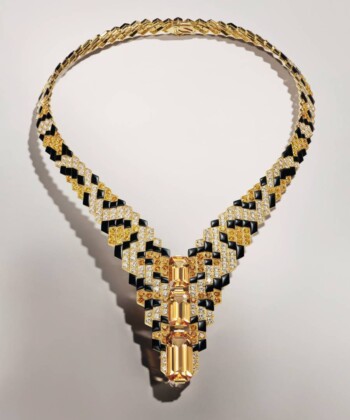Fashion publicist James LaForce is constantly meeting with new clients, but he’ll never forget one first session with a buttoned-up Italian shoe company and its venerated CEO. “There was a hush in the room when he came in, and these terribly uptight, suited Italians with MBAs made their anxious introductions.” But instead of handing out logo-ed business cards, LaForce opted for the simple cards he kept in his desk drawer—flimsy and white, with only the word ‘JIM.’ They are his calling cards. “The minions looked at me like they’d brought their boss to the wrong place,” he recalls, “But he loved them. He thought they were funny and totally hysterical, and as soon as he laughed, the MBA minions did, too.”
LaForce uses ‘JIM’ as an icebreaker with potential clients and relishes the shocked reaction from some. “I always feel my business is a little bit of a cliché, and I think this takes the edge off a little bit.” Indeed, an overload of information on a business card—from high-powered titles to buzzy zip codes—used to indicate importance. Now, as LaForce knows, what’s shockingly chic is the mystique of calling cards: The less you reveal, the better.
Usually made from thick stock, these minimalist throwbacks feature nothing but a name; additional, impromptu details can be added by hand. Call it social sifting—what you choose to reveal can be tweaked on a case-by-case basis. A calling card is a form of social semaphore, conveying status and confidence (no wonder Whitney Fairchild, Nina Griscom and Brooke de Ocampo have been spotted passing them out). There’s simplicity and style in a single name; after all, with cellphone, email, landline, office, fax, social media handles, mailing address… there’s so much information on a business card these days, most of them look like a phone book—and an ugly one at that.
The idea originated in the nineteenth century: Before caller ID allowed us to send unwanted calls to voicemail, you could screen callers when they placed a name card on the butler’s silver tray. Today’s revivalism was sparked in part by much the same instinct—neutralizing inappropriate networking by choosing how much or little information to share, person by person. Passing out such minimalist cards at a dinner party, for example, means there’s no risk of being hounded on Monday morning with sales calls from that pushy guy at the end of the table. And if that charming stranger in a bar can’t hunt you down on the basis of just a name, he’s probably not worth dating anyway.
“Everyone puts so much into their business cards—fancy, triple-thick stock with gilded edges and lined embossing, and we have so much of our identity invested in those cards,” adds LaForce. “It’s is an antidote to that.” (The Italians clearly swallowed it whole. They hired his firm to shill their shoes.) Of course, no-one loves his ‘JIM’ cards more than his mother back home in Wisconsin. In the ultimate calling card throwback, she keeps a stock in her hallway on a little silver tray to give to guests as they’re leaving.









































